The new Apple TV has been revamped both inside and out, sporting an entirely new operating system dubbed tvOS that brings it even closer to iOS, along with an overhauled Siri Remote featuring voice input and a fantastic clickable trackpad. But it's what's yet to come — namely, the growth of the Apple TV App Store — that will make or break the next-generation set-top box.
The fourth-generation Apple TV comes in two capacities of 32 and 64 gigabytes, priced at $149 and $199, respectively. Both models come with the same black "puck"-like design, though the new model is slightly taller than its predecessors.
With capacity being the only difference between the two models, we feel most users will be content with the 32-gigabyte version. But for our review, we tested out the high-end 64-gigabyte version.
The hardware
The Apple TV itself remains a low-key affair, meant to blend into a home theater setup and allow users to focus on the content on their HDTV.
Apple still does not ship the unit with an HDMI cable, which while minor, seems like a strange omission for a company focused on ease of use. The new model also ditches a dedicated optical out cable, which will be seen as a disappointment by those who use home theater headphones without a receiver, or who wanted to use the Apple TV as a dedicated AirPlay audio player.
While the box itself lacks in a few small areas, the Siri Remote is a huge improvement. It's svelte and comfortable and functional, and its built-in Bluetooth connectivity means users don't need line-of-sight to control their Apple TV, unlike with most other living room remotes.
Still, the Apple TV itself and the Siri Remote include infrared support — the former to allow universal remotes to control the Apple TV and the latter to allow the Siri Remote to adjust volume on TVs and receivers.
The Siri Remote also recharges over Lightning, which is a welcome change for those of us who are not interested in buying replacement batteries. There is no power adapter for the remote in the box, however — just a standard Lightning to USB cable.
Setup and usage
Initial setup on the Apple TV is a pinch: Users can transfer iCloud and iTunes credentials from their iPhone to the Apple TV via Bluetooth. In our tests, it took a couple of tries to get the setup to work, but once it was on its way, we had our device up and running in no time.
The experience was not as smooth, however, for the multitude of services that we access from our Apple TV.
Entering text with the Siri Remote is somewhat of a chore, and confusingly, Apple does not include support for its iOS Remote app at all (yet).
With previous second- and third-generation Apple TV units, the Remote app could be used for virtual keyboard entry, which greatly expedited the experience. With the fourth-generation Apple TV, we were forced to use the Siri Remote with an onscreen alphabet, which proved to be a cumbersome and lengthy process when signing into Netflix, HBO Now, Showtime, Watch ESPN, and more.
We imagine that this issue will be resolved over time, with future updates to tvOS, and hopefully an updated version of the iOS Remote app as well.
Siri and universal search
Siri on the Apple TV is hit or miss.
Cross-platform search does in fact work, and it works well. I told Siri I wanted to watch the film John Wick, and I was presented with the option to purchase or rent it on iTunes, or watch it streaming for free with my HBO Now subscription.
Siri can also handle broader searches. For example, tell it to show a list of Quentin Tarantino movies from the '90s, and you'll get your wish.
It can even be used for commands while watching programs, including enabling closed captioning, adjusting sound, or finding out information about the content playing.
Siri also launches apps, gives sports scores, provides the temperature and more. It even retains some of the quirkiness of its iPhone counterpart — when I asked the Apple TV Siri why it does not speak, the system responded with: "No one likes a Chatty McChatterson when there's a show on."
But there are shortcomings. Siri currently only works with iTunes, Netflix, Hulu, HBO, and Showtime. Apple has promised that universal voice search support will be available in the future, but for now, you won't get that with your purchase.
Even more baffling is the fact that Siri does not work at all with Apple Music or any personally owned iTunes Store music content.
But perhaps the biggest sin of all is that there is currently no way to search on the App Store with Siri. Coupled with the lack of support for the iOS Remote app, and searching for apps is a frustrating process.
All of this feels like early days, and things that Apple will be able to fix over time with gradual improvements. But it's hard not to knock the device for not supporting these capabilities out of the box.
tvOS and the App Store
Despite our issues with search, we feel the tvOS App Store is off to a great start. At launch, there are said to be more than 1,000 apps already available to download, many of them free and universal apps also available on iOS.
Upon launching the App Store, we were able to navigate to the "Purchased" tab and see a list of more than 40 applications we had already installed on our iPhone or iPad. This cross-platform support with iCloud more tightly brings the Apple TV into the company's ecosystem, and makes for a great experience out of the box.
Developers can choose to make their own, separate TV apps, but the real benefit for consumers will be when apps are universal, allowing them to buy once and own an app across all devices.
Developers can choose to make their own, separate TV apps, but the real benefit for consumers will be when apps are universal, allowing them to buy once and own an app across all devices.
For example, we purchased Geometry Wars 3 on our iPhone, and were able to immediately download the same app for free on our iPad and our fourth-generation Apple TV. Playing the game with dual thumbsticks on the Apple TV was the ideal experience, but thanks to iCloud game save syncs, we could also bring our saved progress with us on the go, and play Geometry Wars with the touchscreen on our iPhone.
In this example it's easy to see how the Apple TV will become a crucial part of the Apple ecosystem for many users.
Much like with the debut of the iOS App Store, the first-generation iPad, and this year's debut of the Apple Watch, applications on the tvOS App Store are hit or miss. Apple would be wise to improve discovery as well — the App Store currently lacks a top downloads list, which is a fun way to see what's popular on iOS. (Update: After this review was published, Apple flipped the switch on a "Top Charts" section for tvOS)
Some apps have been rebuilt from the ground up to take advantage of the new Apple TV, like HBO Now. Some are simply basic ports of the previous barebones Apple TV apps, like NHL GameCenter (to which an update is coming in early 2016). And then there are some apps where we have to wonder why they exist, like Zillow.
But that's the great part about having a broad App Store: There's a little something for everyone here, and it's only going to get better as time goes on. Developers are, for the most part, only limited by their own creativity, and we're optimistic that the tvOS App Store is going to be a big deal heading forward.
And while they are entirely cosmetic, the Apple TV's live wallpapers are absolutely gorgeous and hypnotic. Not much else to say, except, wow.
Controller support and gaming
Apps are arguably the key part of the Apple TV experience, but most games that just use the Siri Remote are limited in terms of their functionality. We found that Asphalt 8 worked fine with the remote: Acceleration was automatic, tilting the remote was used for steering, and the trackpad could be pressed for braking.
A more cumbersome experience was had with Geometry Wars 3, where a combination of touchpad and tilt controls allowed for both moving and shooting in independent directions. It's clear in this case that Siri Remote support was included just to meet Apple's own rules, which require that any game on the App Store work with the remote.
But no one in their right mind would play that title, or most other games, with just a basic remote. Thankfully, the new Apple TV also supports iOS-compatible game controllers, which have been available on the market for a few years now, and our experience is that they work great.
Unlike iOS, where it's nearly impossible to find out which games on the App Store support third-party controllers, the Apple TV makes it very clear when a title features game controller support.
In addition, users who connect a Bluetooth controller can also navigate across the entirety of tvOS, allowing users to jump in between games (or just apps) without needing to put down their controller and pick up the Siri Remote.
Unfortunately, the Apple TV is limited to two physical controllers. And developers who can't find a way to shoehorn in Siri Remote control support won't be able to port their games to Apple TV. But we hope that Apple could relax these limitations in the future, allowing the new Apple TV to truly spread its wings as a viable gaming platform.
For now, we think it's off to a good start. The promise of universal app support with iCloud game syncing and controller compatibility has been realized. Now the onus is on developers to support the platform, and for gamers to start buying titles on Apple TV.
The future
We've spent a lot of time talking about what we expect to be fixed in the future with the Apple TV, but perhaps the biggest omission of all is Apple's heavily rumored subscription streaming television service. The latest reports have pegged it for launch sometime in 2016.
It's impossible to know just how, or even if, this service will play into the Apple TV ecosystem. But certainly some who buy in to the new platform are eagerly anticipating what it might do for cord cutting prospects.
We're happy to say that, for now, things continue to get better every day. Both HBO and Showtime are onboard for cable cutters, and that's a huge start. CBS is also offering a subscription-based plan, though it lacks sports.
Most other streaming apps on the Apple TV require some form of a cable login to access on-demand content. But that's likely to change over time, as user habits evolve and networks cave to consumer pressure.
That said, we wouldn't recommend buying the Apple TV on the promise of what's to come. As it stands right now, the current product as a lot to offer. But is it worth $100+ more than a Chromecast or Roku?
The competition
Priced starting at $149, the new Apple TV might be hard sell for some consumers, especially when other iPhone-compatible streaming devices like Google Chromecast are considerably cheaper.
Chromecast is basic, but for $35, it's hard to beat the price. It doesn't offer nearly the functionality of the new Apple TV, including detailed apps and universal search, but if you just want a Netflix machine, that may be enough.
There's also Roku, which offers the 4K-capable Roku 4 for $130. Lack of 4K support for the Apple TV is a strange omission, considering the new iPhone 6s shoots 4K video, but with a dearth of available 4K content, subpar Internet across most of the world, and a limited number of affordable 4K television sets on the market, we don't see this as a very big deal.
There's also the $40 Amazon Fire TV Stick ($50 with Voice Remote), and the full-fledged Fire TV with 4K support for $100. But Amazon's products also feel like a pitch to sell you into the Amazon ecosystem and its lineup of content, even more desperately so than Apple with iCloud and iTunes.
Apple also sells its third-generation Apple TV for $69, which offers many of the same apps and services from the fourth-generation model built-in. The lack of games, Siri Remote, Siri search and tighter iCloud integration make this a tough sell, though.
Conclusion
For now, before the tvOS App Store has time to grow and mature, and before Apple has a chance to work out some of the kinks and bugs on the fourth-generation Apple TV, the main question for prospective buyers should be: How invested are you in the Apple ecosystem?
If you already have a second- or third-generation Apple TV, or even a Chromecast, and you primarily use it just for Netflix, it's probably best to wait and see. We think the Apple TV will be a great platform going forward, but at the outset, there's no rush to buy in this early.
If you're a heavier streamer with subscriptions to Netflix, Hulu, and HBO, plus a large iTunes library, universal search of those platforms is a major selling point. The new Apple TV makes it much easier to find what movies or shows are available on what platforms, which has been a headache for years, and something that Siri now handles better than any other streaming device on the market. It isn't perfect, but it's a huge step in the right direction.
For gamers, the new Apple TV is off to a surprisingly strong start. If you're heavily invested in iOS games and you already own an iOS gaming controller, you're probably the type who will be happy if you buy in now.
While the Apple TV isn't going to replace titles the caliber of flagship Xbox One or PlayStation 4 games in the near future, there's enough here to see promise. Not to mention, iOS and tvOS already offer better, more seamless cross-platform purchasing, playing and syncing than Sony's own PS4 and PS Vita. Granted, that's more of a commentary on the failure of Sony than Apple's own success, but still — it's mobile and living room gaming, always connected and always with you.
If you're a cord cutter, wait. You won't be able to bypass cable login screens yet for most major networks on the Apple TV. Hopefully that will start to change with a rumored Apple subscription service in 2016.
Finally, if you don't have a streaming device yet, it really comes down to how palatable the $149 price point is. Netflix-only users will likely be content with a basic Chromecast, but if you want more content options or are heavily invested in an iTunes movie library, we'd advise skipping the $69 third-generation Apple TV and just getting the fourth-generation model with Siri Remote.
In addition to more processing power with the integrated A8 chip, the Siri Remote and its touchpad are a joy to use. And the inclusion of the App Store means that the device will improve and grow, with new third-party apps arriving all of the time.
The groundwork has been laid, and it's a solid foundation for the future of Apple in the living room.
Score: 4 out of 5
Pros
- The Siri Remote with touchpad works great
- Universal search finally makes it easier to locate content
- The App Store and iCloud integration are off to a promising start
- Game controller support is already better than on iOS
Cons
- Siri doesn't support the App Store or Apple Music — yet
- Why no iOS Remote app support?
- At $149, some may want to wait for more cord cutting incentives
Where to buy
The fourth-generation Apple TV is priced at $149 equipped with 32GB of storage and $199 for 64GB. Alongside Apple's physical and online stores, AppleInsider partner MacMall has both the 32GB and 64GB model in stock now, while B&H Photo, which offers tax-free orders outside of New York, expects supply soon.
 Neil Hughes
Neil Hughes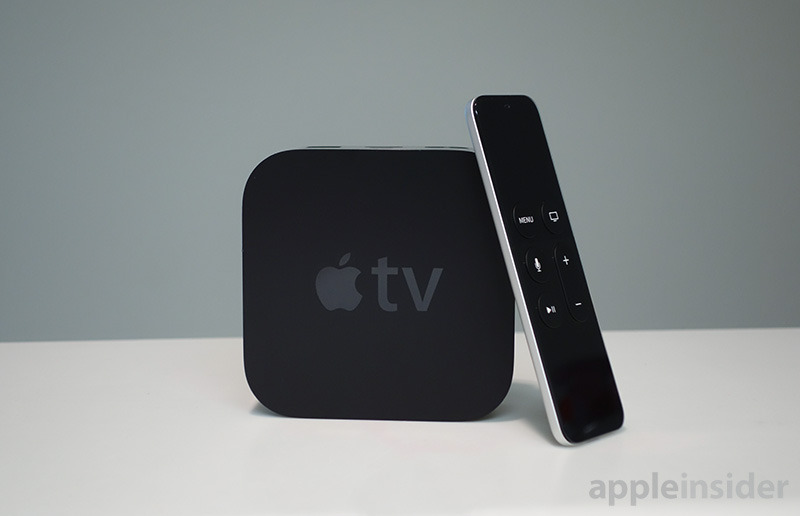
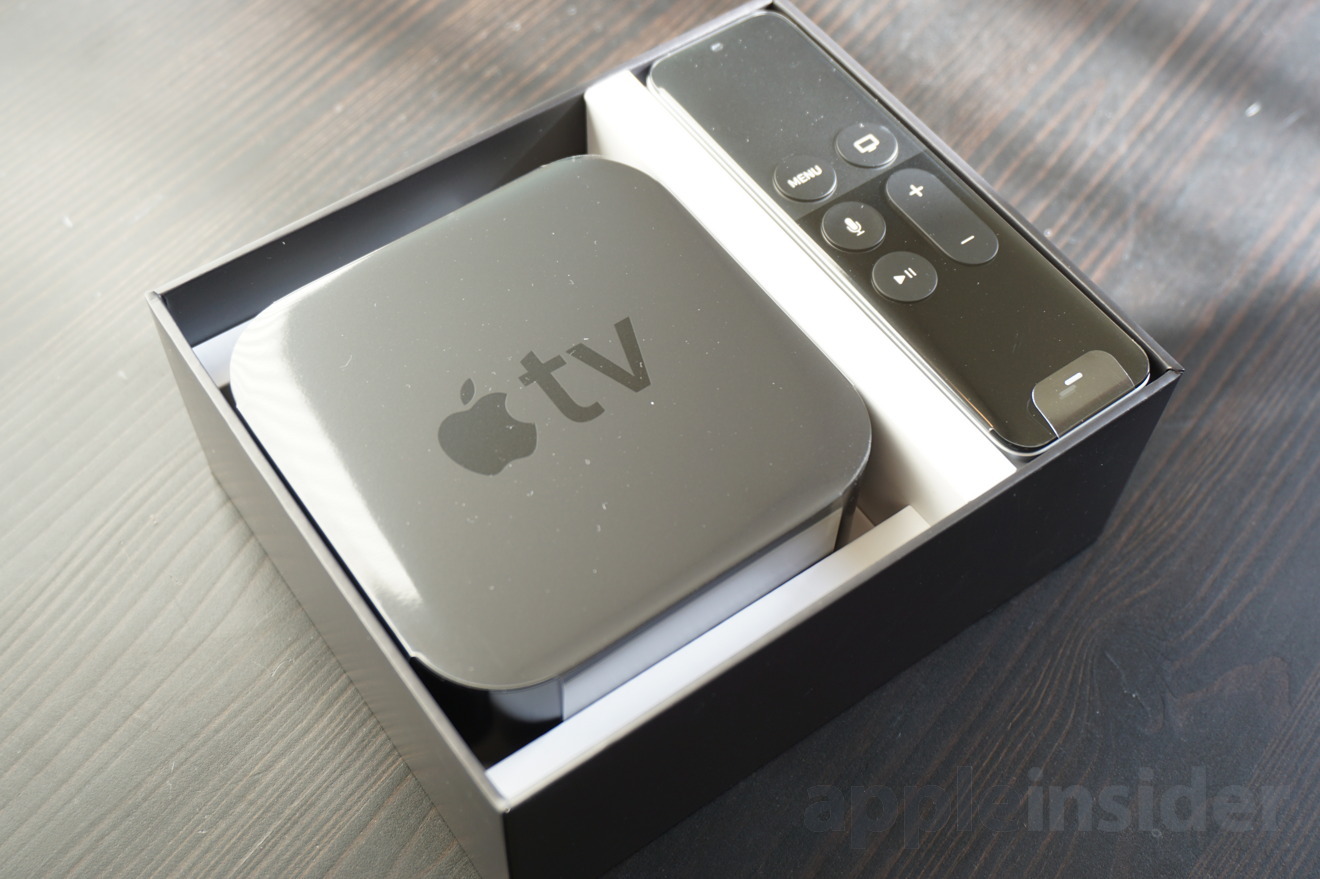
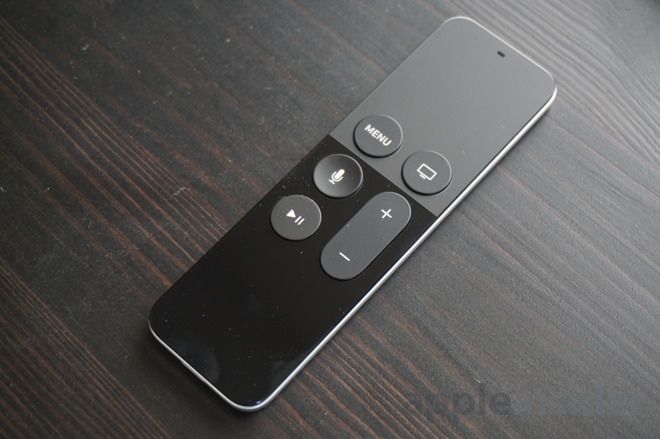
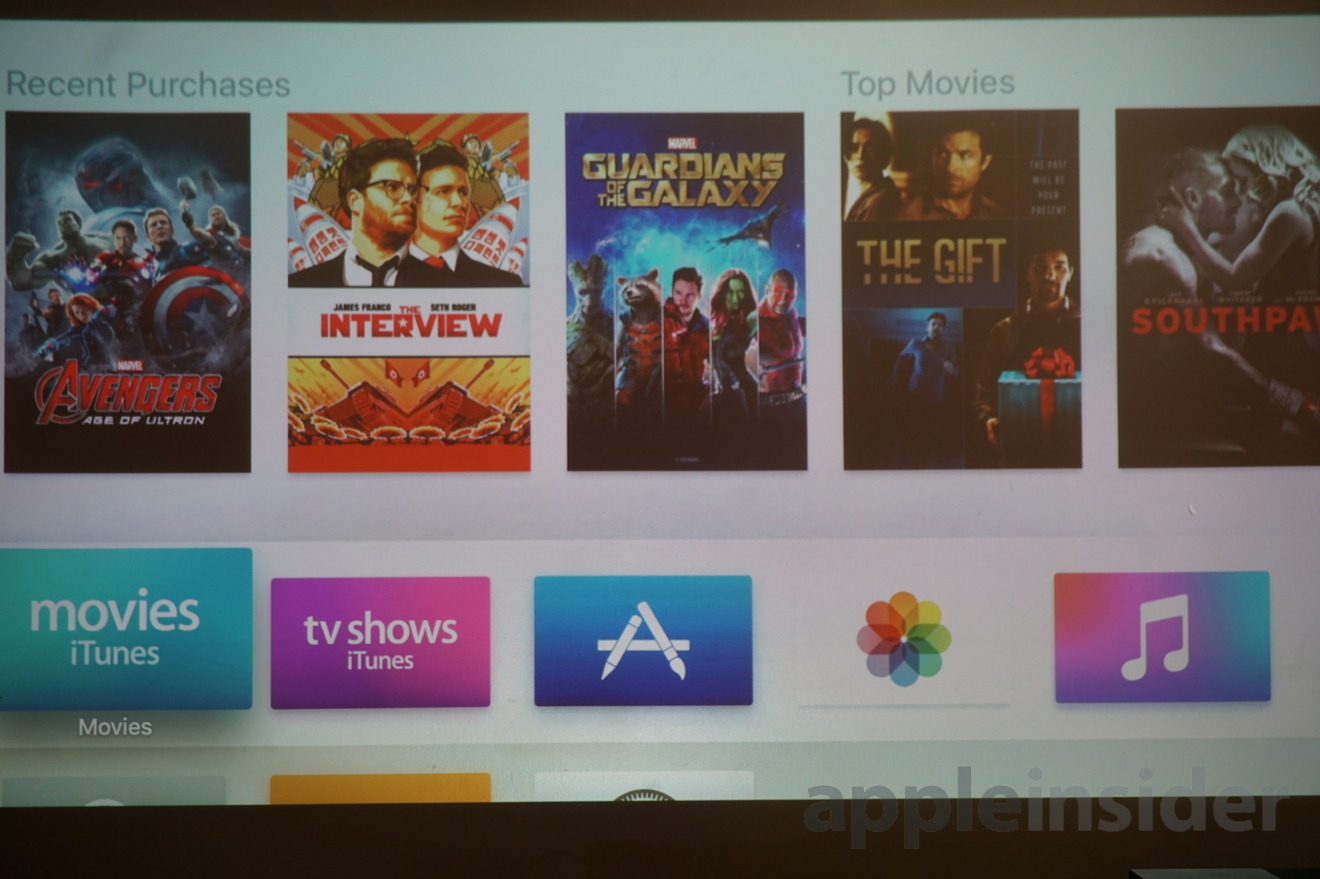
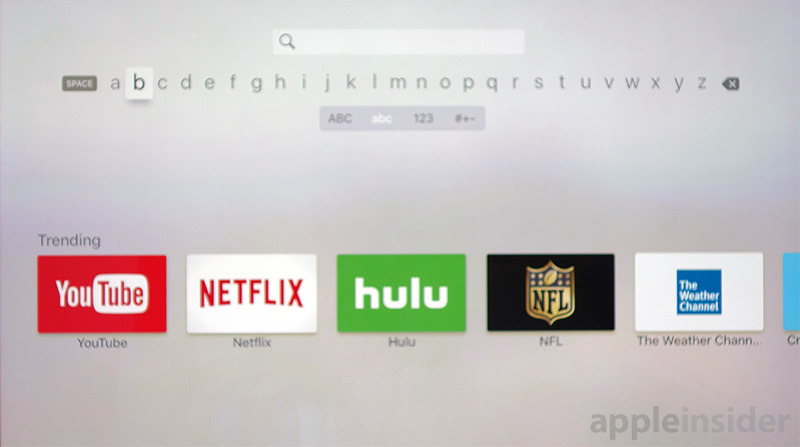
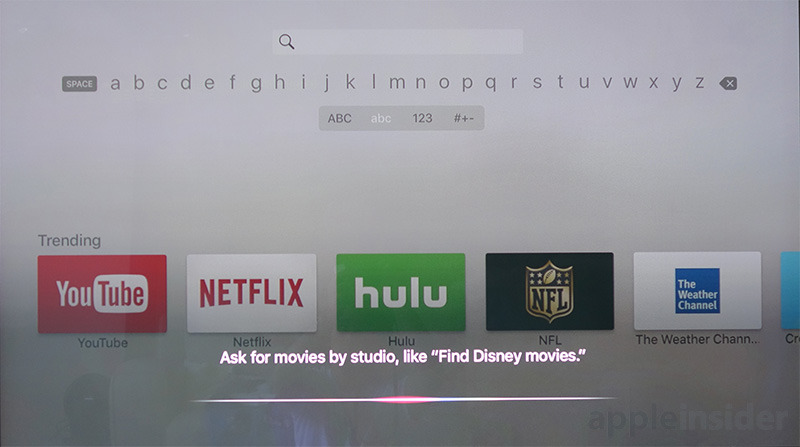
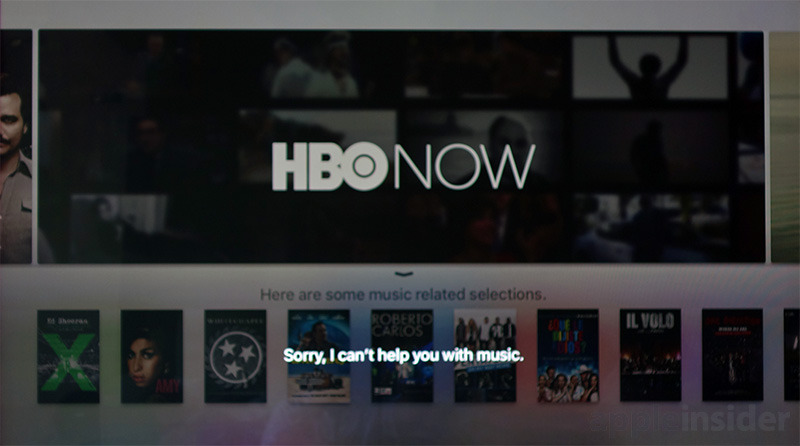


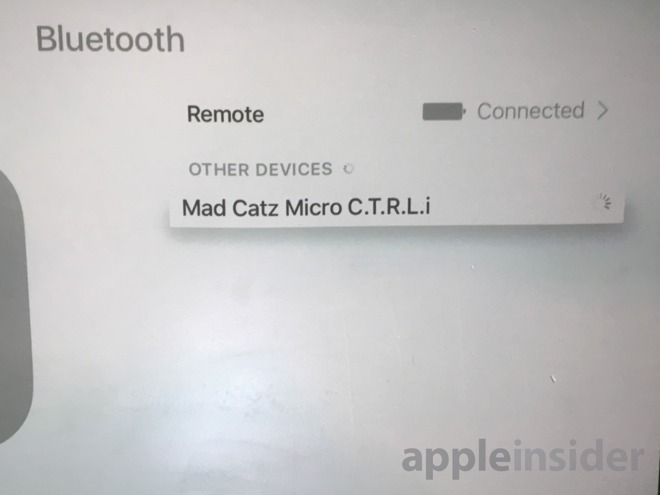
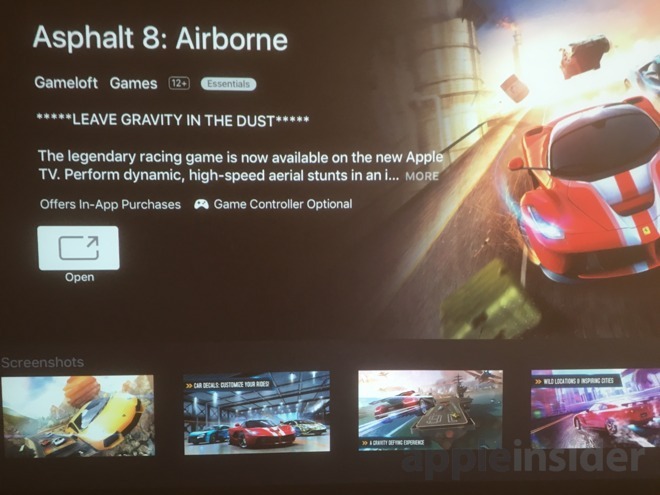
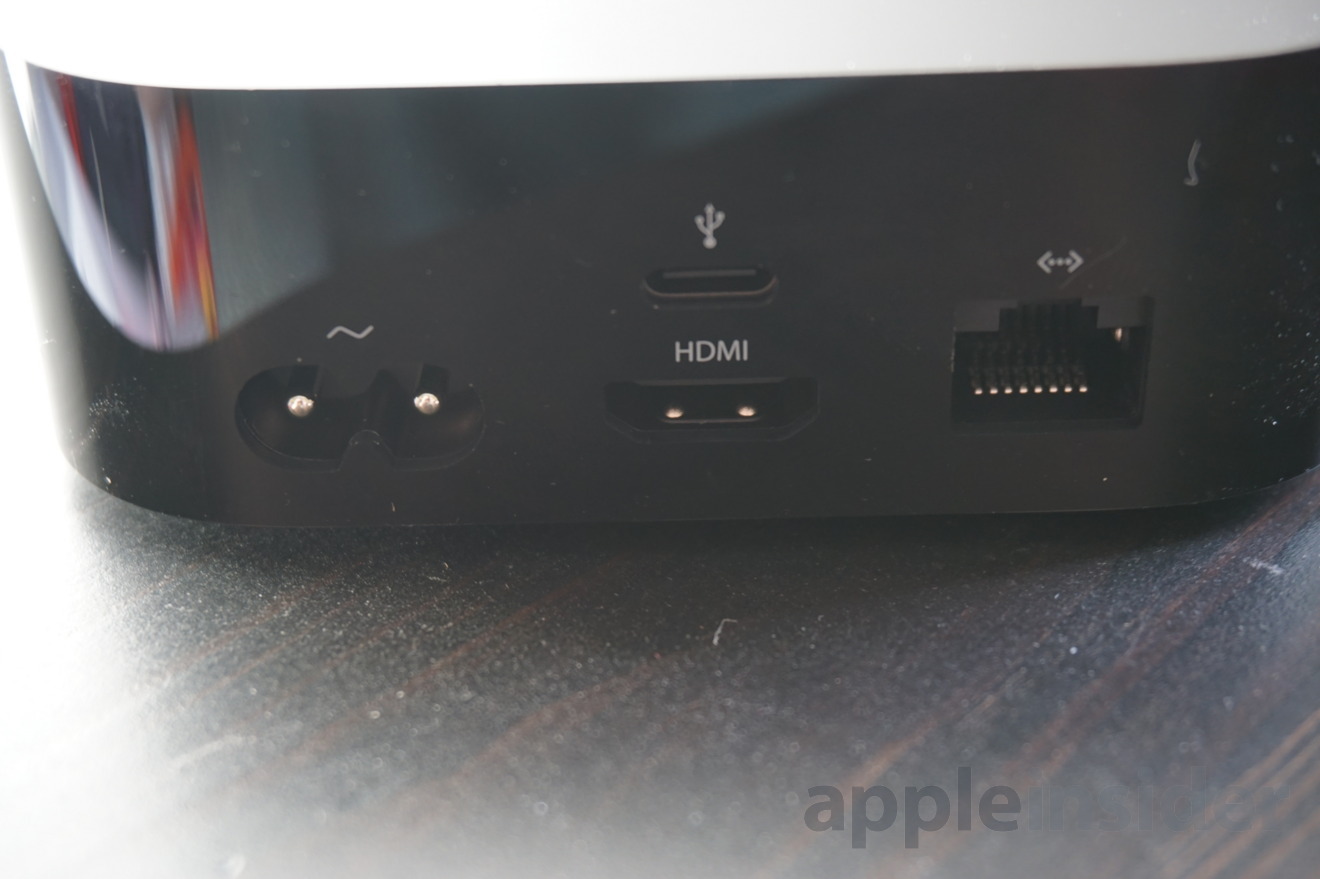
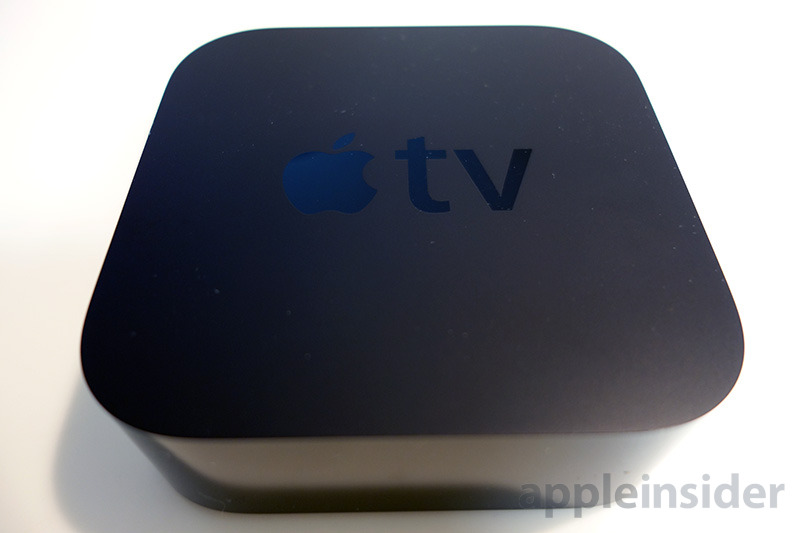
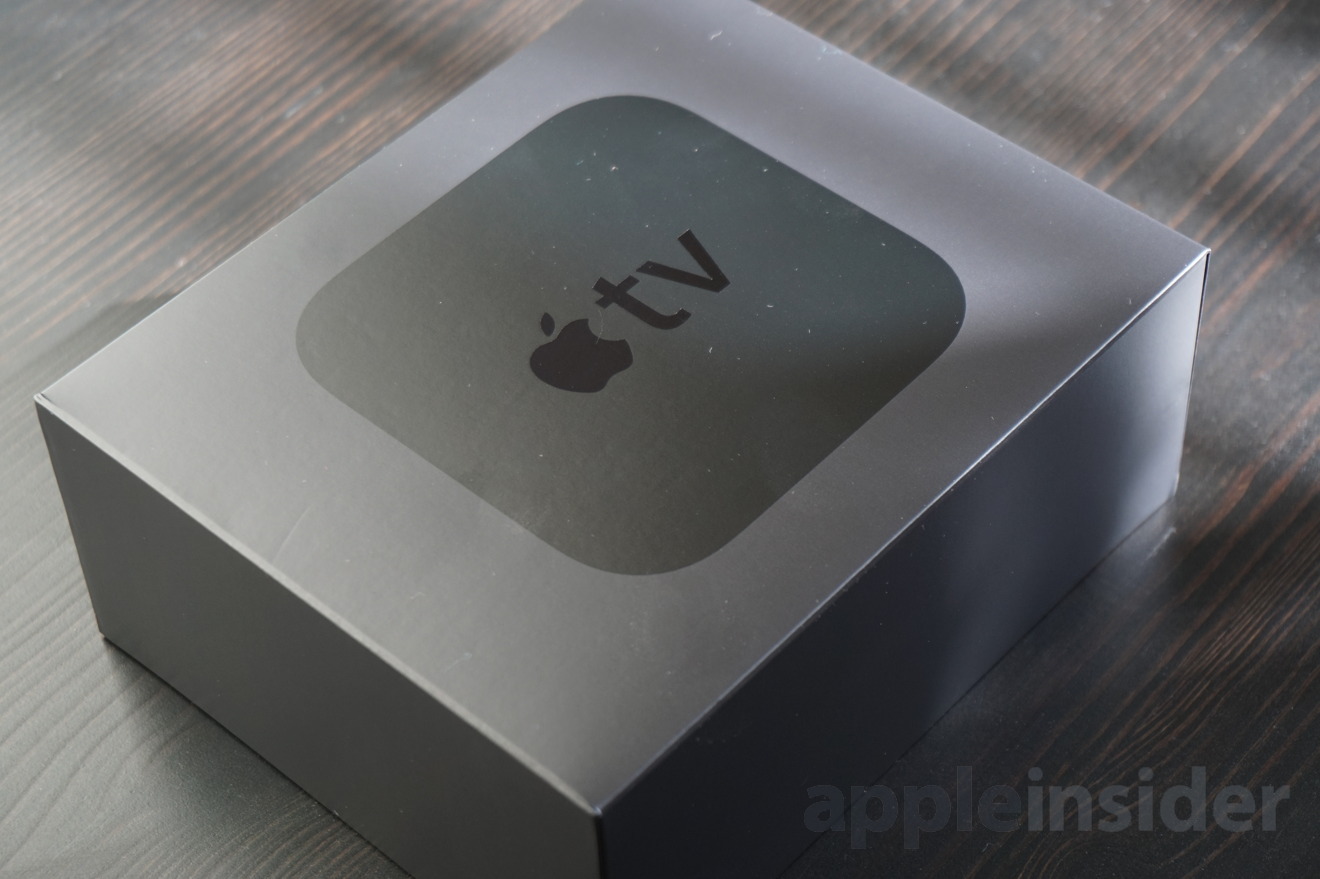
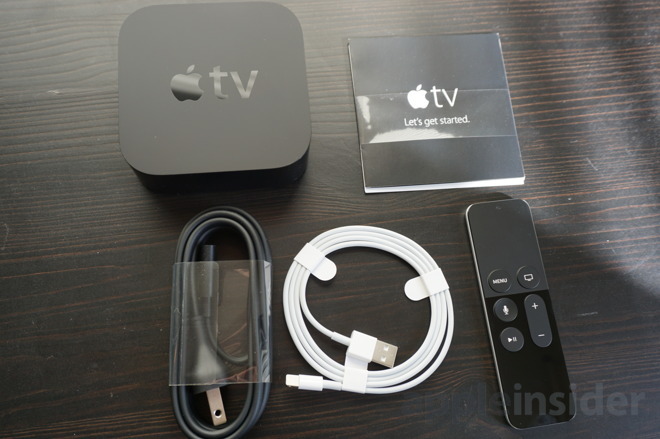
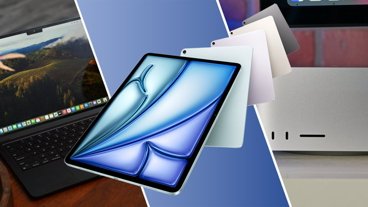
-xl-(1)-xl-xl-m.jpg)





-m.jpg)






 Chip Loder
Chip Loder
 Amber Neely
Amber Neely
 Wesley Hilliard
Wesley Hilliard
 Marko Zivkovic
Marko Zivkovic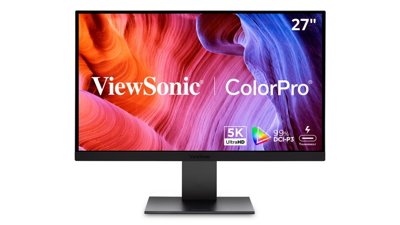
 Andrew Orr
Andrew Orr
 Malcolm Owen
Malcolm Owen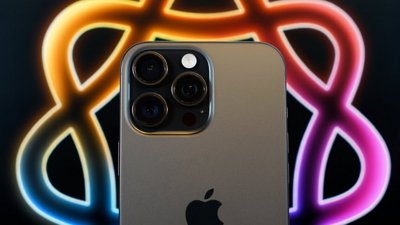









101 Comments
I can tell you, as a Plex user, the new Plex App has already made this worth it. Plex supports DVBLink DVR client add-ons and 3rd party channels. So I'm not only watching my DVD's that I've ripped to digital format, but live TV, my DVR'd shows, and podcasts like TWIT.TV at will all in one place.. Very happy.. Their are some UI tweaks I'd like to see, but for the most part it's seamless. Soon Apple will open up the universal search to developers, per Tim Cook, so I'm eagerly awaiting to see that added to the Plex App as well!
4 out of 5...really? I had high hopes for this but seems half baked and rushed to market. Considering the length of time since the last update and hype surrounding it I'm a little disappointed.
What a weak 'Cons' list. Two of three will be solved by software updates shortly And, are u too poor to afford $149 to redefine your TV experience?
[quote name="Red Oak" url="/t/189893/review-fourth-gen-apple-tv-with-siri-remote-and-tvos-app-store/0_100#post_2800364"]What a weak 'Cons' list. Two of three will be solved by software updates shortly And, are u too poor to afford $149 to redefine your TV experience?[/quote] $150 is not all that much, the new Apple TV hardly redefines the TV experience.
There's clearly a big market for this so I'm disappointed Apple released a half baked product. Lack of audio out is step backward as is its industrial design. I'm afraid Apple has lowered its gold standard. El Capitan, for example, is fraught with bugs. It seems Apple will do well with TV in spite of itself but if these lower standards persist people will begin to catch on.